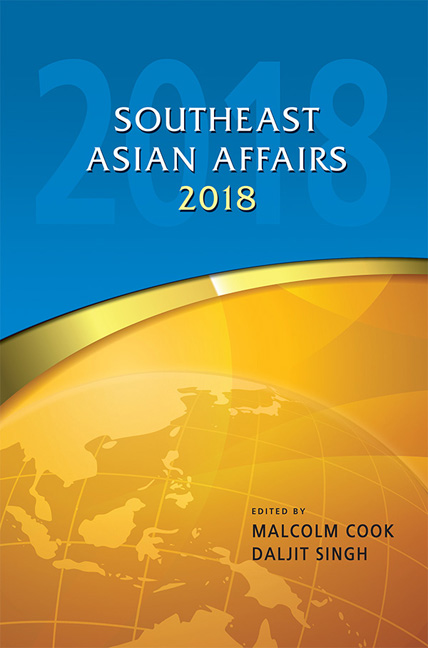Introduction
Published online by Cambridge University Press: 08 June 2019
Summary
As foreshadowed in Southeast Asian Affairs 2017, key developments in 2016 helped shape Southeast Asia's regional environment in 2017 and the domestic developments of the eleven countries covered in this volume. As discussed by Lee Hwok-Aun, the improvements in the global economy and the wider East Asian one meant economic headwinds were positive for Southeast Asia in 2017. The beginning of the Trump administration in the United States of America has added a new source of regional geostrategic and geoeconomic uncertainty. In contrast, China's growing influence and assertiveness in the region is a source of geostrategic and geoeconomic certainty. The five-month siege of Marawi City and fears of Rohingya radicalization in Myanmar and the refugee camps in Bangladesh are a reminder that the threat of violent extremism is a structural rather than a cyclical factor. Election cycles in the region's democracies and leadership renewal cycles in the non-democracies were the most important determinants of domestic politics in most regional states.
Southeast Asia and the Great Powers
The year 2017 heralded the coming of more great power rivalry in the Indo- Pacific region, a geopolitical framework of Japanese origin but one adopted by U.S. president Donald Trump and featuring prominently in official U.S. documents like the National Security Strategy (NSS) of December 2017 and the National Defence Strategy (NDS) soon after. China's assertiveness and pressures on other countries had been leading to a pushback from the United States and its allies.
There were at least two important indicators of this. The first was the Quadrilateral Security Dialogue (the Quad), an informal forum of Japan, Australia, the United States and India to discuss security challenges in the Indo-Pacific. Though not a formal military alliance and still at the discussion stage, it is likely to evolve further. Second, the NSS and the NDS for the first time describe China (together with Russia) as a strategic competitor and the most significant security challenge to the interests of the United States and its allies and friends in the region, replacing terrorism. There were also more freedom of navigation (FON) operations conducted by the U.S. Navy in the South China Sea.
The Trump Administration
Two chapters in the regional section of this volume deal with major-power policies for the region, by Joseph Liow Chin Yong and by Walter Lohman.
- Type
- Chapter
- Information
- Southeast Asian Affairs 2018 , pp. vii - xviPublisher: ISEAS–Yusof Ishak InstitutePrint publication year: 2018



